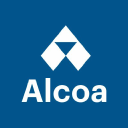With Aluminum Prices On The Decline, What Next For Alcoa?
The shares of Alcoa (NYSE: AA) – a leading producer of aluminum products and alumina – remain down by about 19% year-to-date and are off by around 49% from highs seen in March. The sell-off comes as multiple macroeconomic factors appear to be putting the breaks on the big rally in aluminum prices seen through Covid-19. Aluminum prices are down from a high of about $3,700 per metric ton in early March 2022 and $2,850 in January to just about $2,500 currently. There are a couple of factors impacting the near-term demand outlook for aluminum, including China’s zero-Covid policy, which has resulted in stringent lockdowns in several provinces hurting demand. Moreover, the U.S. Federal Reserve and other global central banks have also been hiking interest rates at a more aggressive pace to combat surging inflation, and the markets are increasingly betting that this will hurt economic growth rates and demand for industrial commodities.
Now, Alcoa has actually been posting stellar results in recent quarters. Over Q1 2022, Alcoa’s revenue rose 15% year-over-year with adjusted EPS growing by almost 4x year-over-year to $3.06 per share, driven by strong pricing despite lower production. Consensus estimates point to earnings of about $11 per share for the full year, meaning that the stock trades at just about 4.5x forward earnings at the current market price of about $48 per share. Although cyclical stocks typically see lower multiples when the markets project that earnings and revenues are approaching a near-term peak, there are a couple of trends that still make Alcoa stock a good value. The EIA’s lower benchmark oil projections for 2023 and prospects of leniency in China’s Zero-Covid policy after Shanghai’s announcement to end lockdowns, may help demand to a certain extent if China’s industrial output picks up. Moreover, aluminum’s diverse utility across multiple industries and rising investments in the renewable energy sector including electric vehicles, charging infrastructure, and solar & wind power plants remain secular drivers for the aluminum industry. We also think that Alcoa could also have an edge over rivals for a couple of reasons. Firstly, the company has a strong balance sheet (net debt of just about $250 million). Moreover, Alcoa’s facilities are largely based in the U.S. and this helps the company lower its energy costs compared to European rivals who are highly dependent on Russian natural gas.
See our analysis of Alcoa valuation for a closer look at what’s driving our $60 price estimate for Alcoa and how Alcoa’s valuation compares with peers.
What if you’re looking for a more balanced portfolio instead? Our high-quality portfolio and multi-strategy portfolio have beaten the market consistently since the end of 2016.
Invest with Trefis Market Beating Portfolios
See all Trefis Price Estimates
